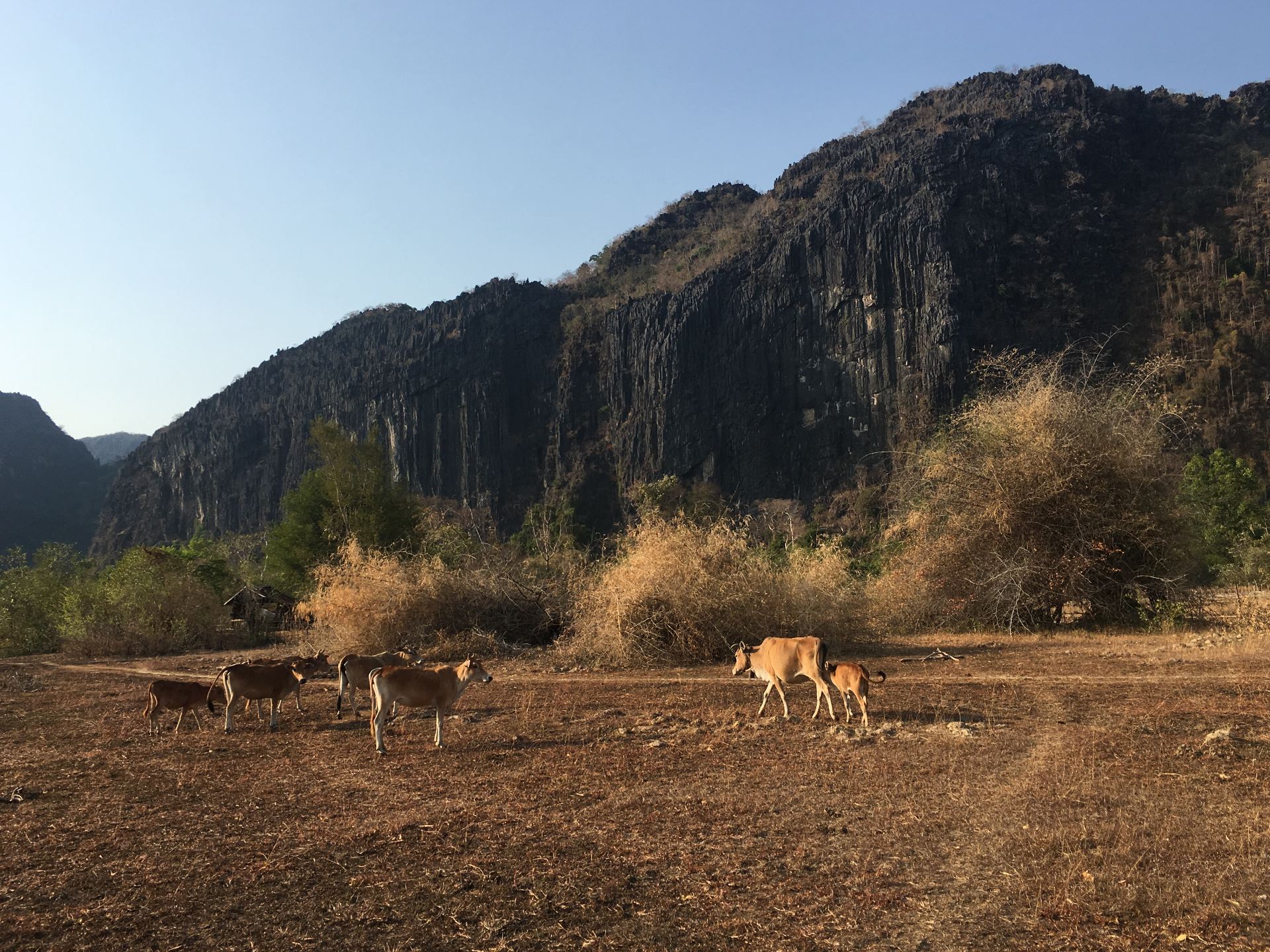Modern anthropogenic climate change is superimposed upon significant natural climate variability, yet the instrumental record of climate is too short to capture the full range of natural variability. In order to fully understand and predict future changes, therefore, high-resolution, well-dated paleoclimate proxy records are needed. These records allow us to quantify natural variability and learn how the climate system responded to past changes in boundary conditions and forcings. Our primary research goal is to reconstruct past climate (paleoclimate) over the past several glacial-interglacial cycles at seasonal to millennial resolution and to compare these records with other paleoclimate data and model output. Specifically, we utilize geochemical variations preserved in natural calcium carbonate archives such as speleothems (cave deposits) to construct well-dated records of past precipitation, temperature, vegetation, and/or atmospheric circulation in the Asian monsoon region (Laos, Vietnam, China), Mexico, and California.
Our research has two primary components:
1. Development and testing of geochemical proxies through process-based studies of modern analogue systems
Isotopic (13C/12C, 18O/16O, 14C) and trace element (Mg, Sr, P, etc.) variations in speleothem calcite are widely utilized as high resolution paleoclimate proxies, yet in order to interpret these data, it is necessary to investigate the modern controls on speleothem calcite through detailed calibration studies. These proxies are primarily controlled by variations in temperature and/or rainfall at a particular study area, but the specific mechanisms are complicated, incorporating a range of atmospheric, hydrologic, biologic, pedologic, kinetic, crystallographic, and thermodynamic controls. Speleothem oxygen isotope composition (δ18O) is the most widely utilized proxy, as it depends only on the δ18O of cave dripwater and cave temperature. Over short timescales, the cave drip water signal dominates and mainly reflects changing rainfall δ18O, which is closely related to climate. One important aspect of our research, therefore, is investigating the modern climatic controls on precipitation δ18O through analysis of existing data, new measurements, and models in order to improve our interpretation of the speleothem records. Carbon isotope (14C and 13C/12C) and trace element (e.g.Mg/Ca) variations observed in speleothems, on the other hand, while ultimately controlled by temperature and rainfall, are directly modified by soil, epikarst, cave, and crystal growth processes and are more reflective of local precipitation. A significant aim of our research is unraveling these complicating factors to determine the underlying changes in temperature (T) and/or rainfall (R) through cave monitoring studies and proxy system modeling.
2. Construction of well-dated, well-calibrated paleoclimate records for comparison with other records and with paleoclimate models
Speleothems are widely studied to generate archives of past climate changes and have led to significantly improved records of past climate variability. Speleothems are well-suited for terrestrial climate reconstruction because: they tend to be very pure and well-preserved; they usually contain clear visible growth banding which, like tree rings, is often annual in nature; they can be very precisely dated using uranium-series radiometric dating methods; and they contain numerous types of physical and geochemical climate proxy data. To construct robust paleoclimate records, we combine detailed studies of modern cave systems with studies of fossil speleothems, utilizing a wide range of techniques (U-Th dating, Isotope Ratio Mass Spectrometry (IRMS), Inductively Coupled Plasma Mass Spectrometry (ICPMS), petrography) along with laboratory experiments, rigorous data analysis, and geochemical modeling. Speleothem records can be dated much more precisely than most other paleoclimate archives using U-series methods, and therefore, often provide important information about the relative timing and mechanisms of interannual to decadal scale climate variability. The ultimate goal of my research is to obtain precisely dated, high-resolution, and robust reconstructions of past variations in rainfall at a wide range of timescales.
We are currently working primarily on paleoclimate records from the Asian monsoon region (China, Laos, Vietnam) and California (Sequoia National Park). High resolution speleothem records from these regions have great potential to help answer key questions about past rainfall variability in these heavily populated regions, where even small changes in the timing and intensity of rainfall can have significant societal, environmental, and economic impacts. In addition, by studying past climate in these regions, we hope to improve our understanding of the past variability and interactions between such major climate modes as the El Nino Southern Oscillation (ENSO), the Indian Ocean Dipole (IOD), the Pacific Decadal Oscillation (PDO), and the Asian monsoon system. Speleothems are one of the most promising archives where millennial-to-seasonal scale continental climate variability may be investigated, and we plan to continue working towards a more spatially and temporally complete speleothem record and an improved understanding of these archives in general.
